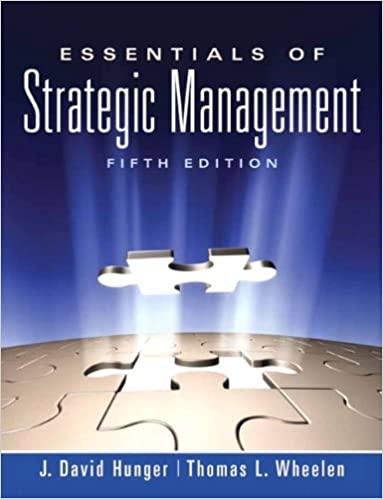Question
Self-selected citizen science project Introduction - what is citizen science?1 Citizen science refers to efforts in which volunteers partner with professional scientists to collect or
Self-selected citizen science project Introduction - what is citizen science?1 Citizen science refers to efforts in which volunteers partner with professional scientists to collect or analyze data. Citizen scientists are individuals in all walks of life - students, the general public, and even professional scientists. The efforts of citizen scientists range from searching for rare species to classifying the shapes of galaxies. In one way or another, all involve public collaboration in scientific research. One of the longest citizen science projects dates back to 1900, when the National Audubon Society launched its annual Christmas Bird Count to involve the public in identifying and counting birds rather than shooting them. Other long-standing projects have involved people in tracking seasonal change, for example by recording the dates on which lake ice melts or particular plant species come into bloom each year in a specified location. In recent years, advances in database and internet capabilities have made it possible for anyone to view and use citizen science data collected across the continent or even around the globe, opening up exciting new possibilities to engage in analysis and interpretation of real scientific data sets to which one can contribute.
Citizen science encompasses a huge range of topics, geographic settings, and strategies. Some projects are confined to a single town or National Park while others are global in scope. Some focus on individual species while others investigate broader taxonomic groups or even entire ecosystems. And some projects are orchestrated by professional scientists while others originate through a grassroots approach. Many citizen science projects are organized by professional scientists interested in collecting data. Using data collected by volunteers, these scientists conduct research over geographic scales beyond what they could cover on their own, in some cases spanning the entire globe. Citizen science also can span timeframes longer than the careers of individual scientists, creating data sets that make it possible to track long-term changes in species or ecosystems.
Environmental monitoring by citizen scientists creates baseline data that prove useful in times of ecological change, for example in tracking the impacts of events such as volcanic eruptions or oil spills or more gradual changes caused by urbanization or shifting climate. Some projects are hypothesis driven, collecting data targeted at addressing a specific research question. Others focus on environmental monitoring more generally. Using datasets generated by either type of project, one can look for trends and test hypotheses of your own design. Individuals can contribute data to citizen science projects or make productive use of the data available online. There is a rich diversity of ways in which one can both contribute to citizen science and make productive use of its outputs, learning science and math through working with real data and engaging in authentic practices of science.
Your Job In this end of year activity, you will contribute to an authentic research study that benefits humankind and/or our Earth's environment. You may have the opportunity to interact with researchers who are solving problems and uncovering new knowledge. You will have the opportunity to select and work on a citizen science project in which you are truly interested. Through this experience, you will develop a greater appreciation and a better understanding of the nature of science and the practices employed in solving problems and uncovering new knowledge.
Visit Zooinverse.org or SciStarter.com and spend time exploring these platforms for people-powered research.
After thoroughly exploring the many options available, select ONE project to become involved in as a volunteer scientist. See instructor for approval of project. Spend at least FIVE hours of time participating in the project.
Submit all the following by the due date: 1. Create and maintain an activity log documenting date, amount of time and brief description of activity accomplished on your citizen science project. Include at least five screenshots of the project in progress.
2. A report five hundred to six hundred words with the following components: a. Provide an introduction and background information about the project including the names of the researchers or organization spearheading the project. Use at least two reliable resources (in addition to the project's website) in your report and cite the references in APA . You should have a references section at the end of the paper. Also, you should have parenthetical references within the body of your report where you used an idea from one of your references. b. State the problem that is being investigated or the new knowledge that is being uncovered in the project c. Describe the method by which citizen scientists are helping to solve the problem or contributing to the study d. Describe how you specifically contributed to the project e. Discuss the expected outcomes of the project - what do the researchers and/or organization hope to accomplish and why? Suggestion: contact the lead researcher and initiate a conversation with him/her. You may be pleasantly surprised by your interaction with researchers who are passionate about their work. f. Identify and appropriately cite any primary scientific journal articles that have utilized data/outcomes of your citizen science project. Alternatively, discuss any significant outcomes that have already been identified and/or implemented as a result of this ongoing project.
3. Make effective, informative, engaging 2-3 minute video presentation that can be shared with instructor
4. Get creative, go above and beyond the requirements (seriously, this is worth points)
Refer to the rubric for specific point breakdown
Step by Step Solution
There are 3 Steps involved in it
Step: 1

Get Instant Access to Expert-Tailored Solutions
See step-by-step solutions with expert insights and AI powered tools for academic success
Step: 2

Step: 3

Ace Your Homework with AI
Get the answers you need in no time with our AI-driven, step-by-step assistance
Get Started


